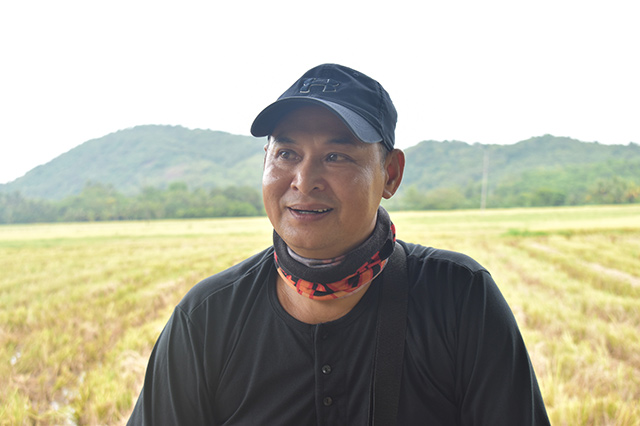
“Ama, graduate na ako, tumigil na kayo [sa pagtatrabaho sa abroad].”
Jorge Acero, 56, clearly remembers this line from his youngest son after graduating in 2018. He has spent 23 years abroad – 8 years in Saudi Arabia and 15 years in Qatar. Thanks to his son’s prodding; he is now a happy, contented farmer-returnee.
On February 29, 2020, Acero arrived in the Philippines after resigning from his work abroad since all his three children have already graduated. He decided to stay in the Philippines for good and continue doing the thing he has always loved – farming.
Being able to arrive in the country less than a month before the nationwide lockdown in March due to the COVID-19 pandemic was a confirmation for him not to return abroad.
Going back to farming for almost two years now, Acero has observed drastic changes in rice farming, particularly in the varieties and technologies.
Catching up with the changes in farming, Acero became a farmer-cooperator during the 2021 wet season, and he tried planting NSIC Rc 402. Back then, all crops were affected by tungro in Siniloan, Laguna, especially Rc 402, so farmers were hesitant to plant the said variety.
This 2022 dry season, Acero braved the challenge and volunteered to plant the same variety. Luckily, NSIC Rc 402, like other varieties this season, was not affected by tungro or other pests and diseases. As a result, Acero harvested 138 cavans in his one-hectare land.
According to Acero, NSIC Rc 402 has a good crop stand, more productive tillers, and does not easily lodge. Good crop stand and lodging resistance are important characteristics to withstand strong winds in case of calamities.
Following all the recommendations and protocols of the technology demonstration greatly contributed to his good yield, Acero emphasized. He is also thankful for the guidance of his wife, Dinia Acero, an agricultural technician.
Acero was also impressed with the mechanical transplanter.
“Despite the laborious process, the seedlings recovered fast as the roots were not damaged unlike when using conventional method laplap, in which the roots are cut to pull the seedlings from the seedbed, causing root damage,” he said.
He also saved P1,000 with the transplanter, cutting down his initial cost from P5,500 to P4,500 per hectare. He needed only 7 people to work with two transplanters, which is fewer than the 10-12 people needed during manual planting. It only took two hours for the two transplanters to plant his one-hectare land. This is faster and more efficient than manual planting, which needs 10-12 people to plant his one-hectare per day.
The crops were harvested on April 1, 2022 and were immediately sold to a miller at P15.50/kg. Now that his crops have been harvested, he lets his land rest for two months. For the meantime, he takes care of his native pigs, which he plans to sell later on.
Acero is only one of the many farmers who have flown abroad to seek better opportunities and have now returned to what they initially did and love – farming. Together with the Department of Agriculture, the RCEF-Seed Program hopes to help all farmers attain a high yield, increased income, and reduced planting cost.




